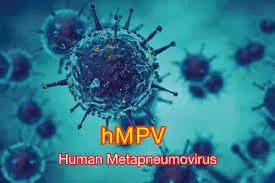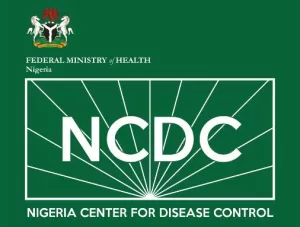Nigeria Centre for Disease Control and Prevention (NCDC) has said that Nigeria was at moderate risk of Human Metapneumovirus (HMPV).
NCDC disclosed this in a statement in response to increased HMPV activity reported in China, the UK, France, and Germany, particularly during the winter season.
HMPV is a respiratory virus causing illnesses ranging from mild cold-like symptoms to severe respiratory infections, particularly in young children, older adults, and individuals with weakened immune systems. The virus is currently circulating in China and other affected regions of the world.
Meanwhile, contrary to rumours in circulation, the NCDC has said that the World Health Organisation (WHO) has not declared HMPV a Public Health Emergency of International Concern (PHEIC).
The Director-General of the NCDC, Dr Jide Idris, who disclosed the development in a statement and public health advisory, said the centre, in collaboration with the Federal Ministry of Health and Social Welfare, was actively monitoring the situation and implementing measures to ensure public health safety.
Giving an update of the current situation in the country, Idris explained that all ports of entry into Nigeria have been placed on alert even as the agency is proactively implementing measures to strengthen the country’s preparedness and response capacity against the threat of the HMPV.
On the preparedness measures in place, he said the agency is closely monitoring the situation and has implemented actions to ensure public health safety.
“Nigeria operates a National Influenza Sentinel Surveillance (NISS) system, comprising sentinel sites distributed across the six geopolitical zones of the country. These sites, which include tertiary and secondary health facilities, monitor Influenza-like Illnesses (ILI) and Severe Acute Respiratory Infections (SARI).
“As of January 6, 2025, data from this surveillance system does not indicate any unusual increase in respiratory infections, including those caused by Human Metapneumovirus (HMPV). However, given the global trends in HMPV cases, the Nigeria Centre for Disease Control and Prevention (NCDC) is proactively implementing measures to strengthen the country’s preparedness and response capacity.”
“On January 6, 2025, the NCDC, in collaboration with the Federal Ministry of Health and partners such as the World Health Organization (WHO), the U.S. Centers for Disease Control and Prevention (USCDC), and the UK Health Security Agency (UKHSA), conducted a dynamic risk assessment for Human Metapneumovirus (HMPV). The assessment classified the risk of HMPV in Nigeria as moderate. This evaluation will inform and guide preparedness efforts, decision-making, and response strategies to mitigate potential impacts.”
Idris said in response to the dynamic risk assessment, the agency is taking proactive steps to ensure robust preparedness at all international points of entry (PoEs) with measures aimed at mitigating the potential risk of HMPV transmission through international travel.
According to him, a public health advisory was issued to provide Nigerians with up-to-date information on preparedness actions and preventive measures related to the HPMV threat.
Key actions include conducting a comprehensive situation analysis at all international PoEs to assess current readiness levels.
Among others, the agency is conducting a comprehensive situation analysis at all international points of entry to assess current readiness levels.
He said the NCDC was taking proactive steps to strengthen the country’s preparedness and response capacity.
“An Entry Implementation Protocol on HMPV, approved by the Minister of Health and Social Welfare, is being developed and will be distributed to all points of entry to guide response activities. In addition, quarantine facilities are being identified and prepared to manage any suspected or confirmed cases if required, even as Infection Prevention and Control (IPC) materials are being deployed to PoEs to ensure adherence to hygiene and safety protocols.
Information, Education, and Communication (IEC) materials are being developed and distributed to raise awareness and provide clear guidelines for frontline staff and travelers at PoEs,” Idris revealed.
On surveillance and laboratory diagnosis, he said NISS sites will now test for HMPV in addition to COVID-19, with increased testing capacity in laboratories at international airports.
“The National Influenza Sentinel Surveillance (NISS) sites across the six geopolitical zones monitor Influenza-like Illness (ILI) and Severe Acute Respiratory Infections (SARI). This platform, which is already testing for COVID-19, will now also start testing for HMPV. Provisions will be made to increase the number of tests conducted. Additionally, laboratories in states with international airports will be supported to enable them to test for HMPV.
READ ALSO: HMPV: FG tightens monitoring, to quarantine China passengers after new virus breakout
”Advisories have been issued to hospitals nationwide on enhanced IPC practices, including proper hand hygiene, environmental cleaning, respiratory hygiene, and cough etiquette. All health facilities are required to identify an appropriate isolation room where cases can be quickly isolated while receiving care.
”Collaborating with state governments and healthcare facilities to provide training for healthcare workers to ensure adequate case management teams are in place and ready to respond if needed. This will ensure that healthcare workers are able to provide appropriate care and maintain a high index of suspicion. Supportive care and an emphasis on a high index of suspicion are crucial. We are requesting state governments to activate their treatment centers or isolation centers to ensure they are prepared to manage cases appropriately.”
On the stockpiling of medical countermeasures, he said that relevant materials such as PPEs (face masks, hand gloves, hand hygiene supplies, and other essential IPC items) have been stockpiled for rapid deployment if required. Additionally, laboratory consumables, reagents, and other necessary supplies have also been stockpiled to ensure readiness.
‘We are engaging with the public through clear and accurate messages to address concerns, dispel misinformation, and encourage appropriate health-seeking behaviors. We work in close collaboration with state risk communication and community engagement pillars, health educators, and other trusted voices, such as the media. These efforts reflect NCDC’s commitment to proactive coordination and response at all levels of public health.



